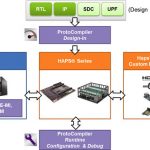You are currently viewing SemiWiki as a guest which gives you limited access to the site. To view blog comments and experience other SemiWiki features you must be a registered member. Registration is fast, simple, and absolutely free so please,
join our community today!
WP_Term Object
(
[term_id] => 71
[name] => Xilinx
[slug] => xilinx
[term_group] => 0
[term_taxonomy_id] => 71
[taxonomy] => category
[description] =>
[parent] => 106
[count] => 114
[filter] => raw
[cat_ID] => 71
[category_count] => 114
[category_description] =>
[cat_name] => Xilinx
[category_nicename] => xilinx
[category_parent] => 106
[is_post] =>
)
One of the things I do in my spare time is listen to quarterly conference calls and try to sort fact from fiction. I compare past calls to the current one and attempt to predict what’s coming next. Confucius said, “Study the past if you would define the future” and I’m a big believer in that.
Paul McLellan wrote about the Xilinx call earlier… Read More
Xilinx announced their results today and had their conference call this afternoon, which I listened to. For them this is 1Q fiscal 2015 which means you have to be careful since there is a big difference between talking about fiscal quarters and calendar quarters. Xilinx’s conference calls are interesting for a couple of … Read More
FPGAs in many ways are still a bit mysterious to some folk. I was at a high level summit in April, and I realized that many there had no idea what an FPGA was. They knew at least what a CPU was or meant and that their kids talk about GPUs. A good analogy I have for an FPGA when compared to a CPU is something like this. Think of the FPGA and CPU as … Read More
I thought I write about one of the most important subjects in FPGAs, that is power. Power of course is not just based on node size, and it is funny why so many people are concerned about node size. If not just as important is the architectural decisions that drive down power. Do you really care if your part is 16nm or 14nm? Or do you care more… Read More
I love God, my wife, kids, and FPGA boards. I know I am not alone, there are other nerds out there, don’t be shy. Friday my “Kintex® UltraScale™ FPGA KCU105 Evaluation Kit” came in. Think about this, this is real 20nm Xilinx FPGA hardware that really works. Below is a nice picture of all the swizzles the board has.
I believe this is the … Read More
Software defined networks were a technique developed around 6 years ago. The original structure of IP based network scaled by using additional routers that would forward packets based on partial information about the network topology. Inside each router was a dataplane, where the packets themselves flowed through, and a control… Read More
Can I ask you a personal question dear reader? It is only fair, you know so much about me and all, so here goes… Why are you still hand coding you’re FPGA design? Surely you are not hand coding interfaces, like PCie, SRIO, DDR, GbE, JESD204B, HMC etc… Correct? OK, why then are you still hand coding the guts of the world’s best, super-duper… Read More
I recently published a post on LinkedIn titled “Sometimes, you gotta throw it all out” in reference to the innovation process and getting beyond good to better. A prime example has crossed my desk: the new ProtoCompiler software for Synopsys HAPS FPGA-based prototyping systems.
Last week, I spoke with Troy Scott, product marketing… Read More
Xilinx announced their quarterly results last week. Because of their financial year not being aligned with their calendar year this is actually 4th quarter of their 2014 financial year. New Year’s Eve 2015 comes early for Xilinx. The results were very good. As Moshe Gavrielov, the CEO, said on the conference call:Xilinx… Read More
Last February Xilinx presented a prototype device at the 2014 IEEE international Solid-State Circuits Conference (ISSCC, titled “A Heterogeneous 3D-IC Consisting of Two 28nm FPGA Die and 32 Reconfigurable High-Performance Data Converters” and click here to get a copy of the paper. Let me just share the intro my dear reader… … Read More



The Quantum Threat: Why Industrial Control Systems Must Be Ready and How PQShield Is Leading the Defense